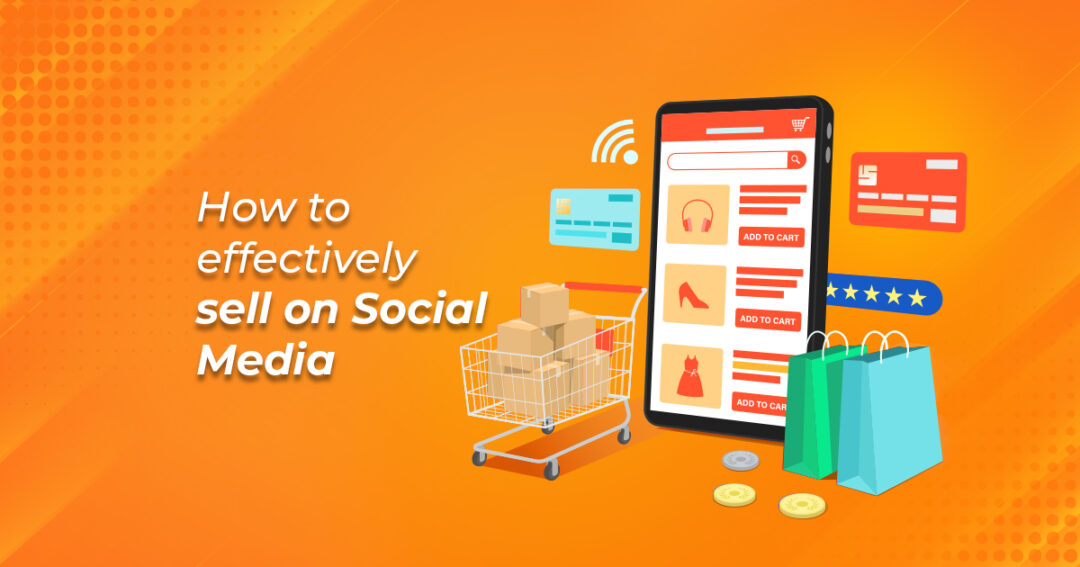In today’s generation, social media has become a norm for brands in order to sustain themselves in the market. The popularity of social media platforms has made it mandatory for brands irrespective of their genre and industry to be present on these social channels.
The most popular social media sites among audiences these days are Instagram followed by Facebook, Twitter, and Linkedin.
Social Selling is a popular term these days for brands who have recently launched themselves in the market and also for the ones who are already present for a long time. The main benefit of social selling is that you can reach a wider audience in less time and with ease.
You can effectively utilize the power of social media through content and engagement, though it takes time, its effectiveness remains for a longer time compared to traditional media.
The above is just one example of the benefit of selling on social media. Let’s dive deeper into this phenomenon and check its other benefits.
According to a report by HubSpot, social selling is a priority for only 8% of salespeople, and yet nearly 60% of people follow brands on social media. Moreover, among 18 to 34-year-olds, between 43 and 48% follow brands on social media because they’re interested in buying products or want coupons.
Create a proper content strategy:
In the world of digital marketing, the most important and powerful aspect is content marketing, the right content strategy for your content can definitely pave the way for an effective and engaging feed. In order to sell on social media, your content needs to be apt and should effectively communicate your brand’s story.
The audience wants to know your story, the struggle, the efforts your brand makes to create the product. They follow your brand for gaining information. The audience wants to buy your product or service and in order to do that, you need to give them proper knowledge about your brand.
There are many different types of content you can use to capture the attention of your audience, including blogs, articles, animated videos, photos, infographics, and much more. If you plan to go forward with your own content creation strategy, start by brainstorming ideas and topics that would be of interest to your audience.
Make use of as many social channels as you can:
To effectively reach a wider audience base, it’s important to publish your content on various platforms that are relevant to your target audience.
LinkedIn is especially good for B2B companies, lead generation, and establishing authority.
Facebook is the most widely used network (so there’s a lot of opportunity and competition), and it’s good for relationship building.
Instagram is the go-to network for brand building, especially if your target audience is under 30 years.
Twitter is the network you want when you deal in time-sensitive matters, and when you want to share messages like breaking news and similar in-the-moment content.
Sales have changed drastically
Over the past few decades because the way consumers shop and behave has changed unlike traditional times, customers now want to shop from the comfort of their homes.
Social selling is a perfect example of this change because it’s a technique that’s about building relationships, with very little time dedicated to active selling.
Many brands have given the ease to shop by posting their products using the tag feature on Instagram which enables the audience to directly visit the brand’s website and shop.
Other options are to make exclusive and personalized offers for your best prospects and by turning pitches into stories.
Working sales into your routine: The sales aspect of your job can be worked into the content portion by working subtle sales techniques and calls to action into your content to drive traffic to your site, increase conversions, and boost sales.
Social selling should be a staple of any modern sales strategy. When you get the routine down, you’ll be rewarded with more prospects, better conversions, higher traffic, steadier engagement, and more sales.
The key points to remember are finding the right content, publishing it in the right places, following up with engagement, leveraging your best prospects, and subtly dropping sales hints.
Also read: Why you need Paid Promotion on Social Media?


